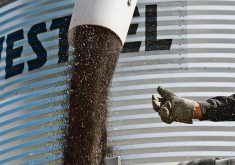From time to time I’ve written about infamous legal matters, often criminal in nature, which occurred or had their roots in Canada some time in the past.
This week’s column deals with a criminal mastermind from many years ago, Alvin “Creepy” Karpis.
Born Alvin Karpavicz in Montreal in 1907, Karpis was raised in the United States.
From an early age he hung out with the wrong crowd and was involved in prostitution, illegal gambling and bootlegging by age 10. By 1926 he had already been convicted of burglary, but he broke out of prison before finishing his sentence.
Read Also

Investigation links green fuel to deforestation
A Texas refinery that supplies green fuel to U.S. airlines has been purchasing animal fat from cattle raised on illegally cleared lands in the Amazon rainforest, according Reuters.
He eventually hooked up with the infamous Barker brothers and they formed the Barker-Karpis gang.
His nickname was derived from the fact that he was quiet and self-contained but had a strange and disconcerting smile.
Karpis was seen as a criminal mastermind.
He was extremely smart despite having limited formal education and possessed an eidetic (photographic) memory. He meticulously planned the bank heists and other crimes, which other gang members carried out.
He was small, thin, and looked more like a librarian than an arch-criminal, but his criminal plans seldom failed.
The gang specialized in robbing banks, trains, armoured cars and mail cars, but it decided to try kidnapping.
The first few were successful, netting the gang hundreds of thousands of dollars in the 1930s. However, events turned against the gang and Karpis found himself on the run.
Pursued by local and state police agencies as well as the FBI, Karpis was listed as Public Enemy No. 1 by J. Edgar Hoover.
He made his way to New Orleans by the spring of 1936, where the FBI located him.
Surrounded by armed agents, as well as Hoover, who had arranged to be present for the arrest, Karpis had no choice but to surrender.
However, the FBI had expected a shootout in which Karpis would be killed and no one had handcuffs. Karpis was arrested and secured with a necktie.
Karpis spent 26 years in the infamous Alcatraz prison. He was frequently cited for misconduct, including fights with other inmates, and spent long periods in solitary confinement.
Sent to lower-security facilities and ultimately receiving parole in 1969, Karpis wrote his autobiography and spent a few years touring to promote it.
He later claimed to have met Charles Manson and that Manson had asked Karpis for guitar lessons, but the story is not confirmed.
He spent his criminal “career” in the U.S., but he had never obtained official immigration status, so upon parole he was deported to Canada. His book was first published here.
Karpis’ death is surrounded in mystery. Living in Spain since the early 1970s, in 1979 he was found dead in his bed with a bottle of pills nearby.
Officials at first said it was suicide, but later changed the ruling to accidental death and then death by natural causes.
No autopsy was held and Karpis was buried in Spain. The exact circumstances of his last days and death remain unclear.
Rick Danyliuk is a lawyer with McDougall Gauley LLP in Saskatoon.














